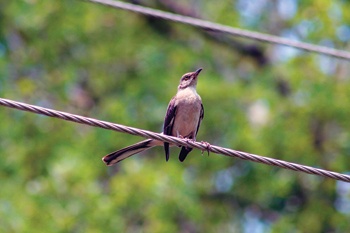If birds can touch electrical wires, are they safe for people, too? If you’re not on a metal ladder, are you clear of danger from power line electrocution?
Know for sure before you take a chance with your life.
First, the facts: Electricity is always looking for the shortest and easiest path to the ground, a path that can include people and objects that touch or come too close to power lines. Electricity is fast—it travels at the speed of light in a vacuum—and it can cause severe burns or death if it flows through the human body. Take power line safety seriously. Read on to find the facts on the following myths:
Myth: Wires must be safe to touch if birds can land on them.
Fact: Birds don’t represent a direct path to the ground, giving electricity nowhere to go but back to the wire. It’s easier for the current to simply stay in the wire. So touching a power line is not safe for humans.
Myth: Power lines are safe to touch because they’re insulated.
Fact: Most lines are insulated only to protect against slight tree contact, but not enough to prevent human injury. Don’t touch them!
Myth: It’s safe to rest nonmetal ladders on a power line.
Fact: Anything that can get wet can conduct electricity, and many nonmetal ladders still contain metal parts. Keep your ladder away from power lines, no matter its construction.
Myth: Ladders are safe near power lines as long as they don’t touch them.
Fact: Electricity can “jump,” especially when a good conductor like a metal ladder comes close. Keep a safe distance of at least 10 feet.
Myth: Trimming trees close to power lines is safe if I don’t use a ladder.
Fact: Metal isn’t the only thing that conducts electricity—the moisture in the tree also can. If a tree comes into contact with the line while you’re trimming, it has a direct path to the ground through the tree, your pruning tool and you. Call your electric cooperative when it’s time to trim trees near power lines.

